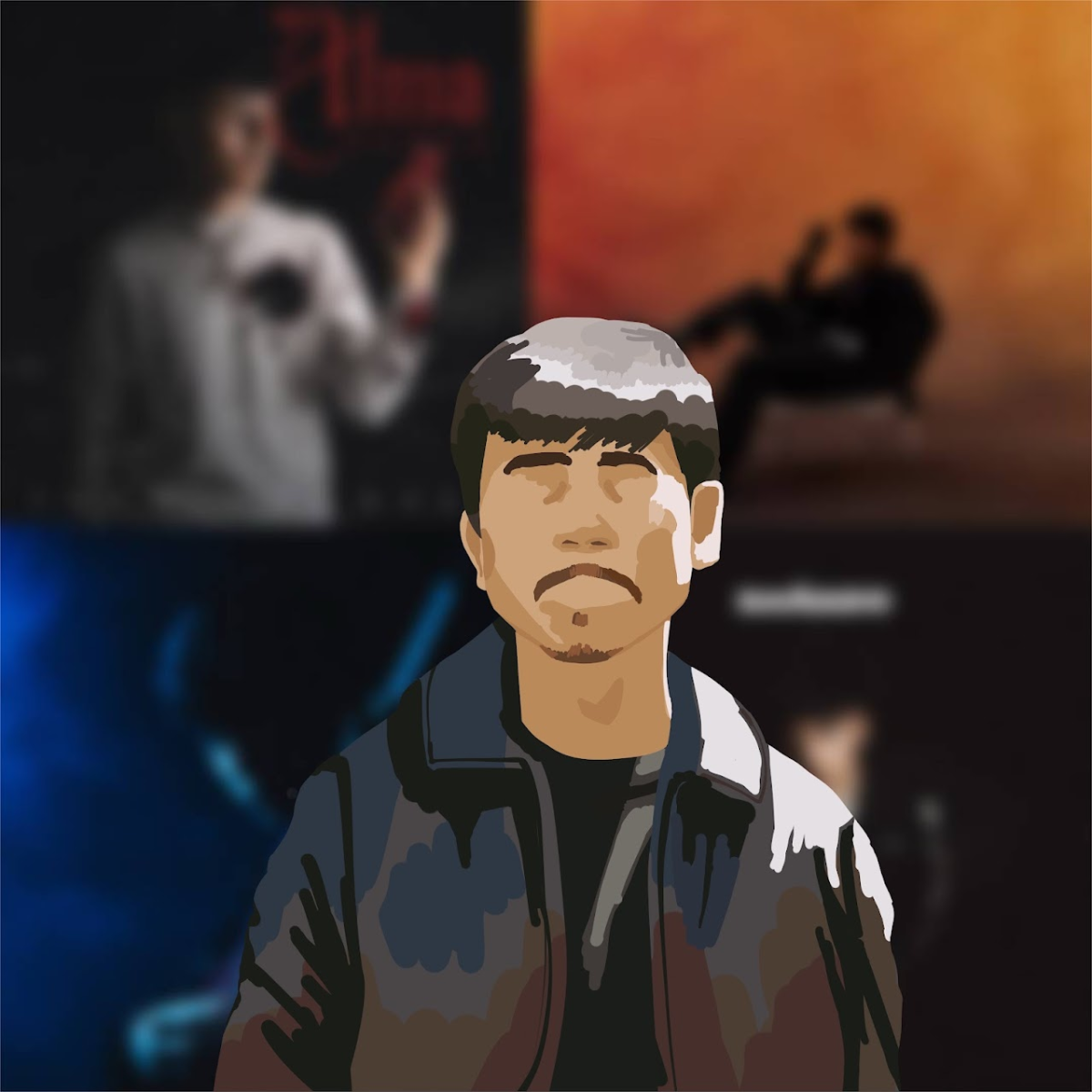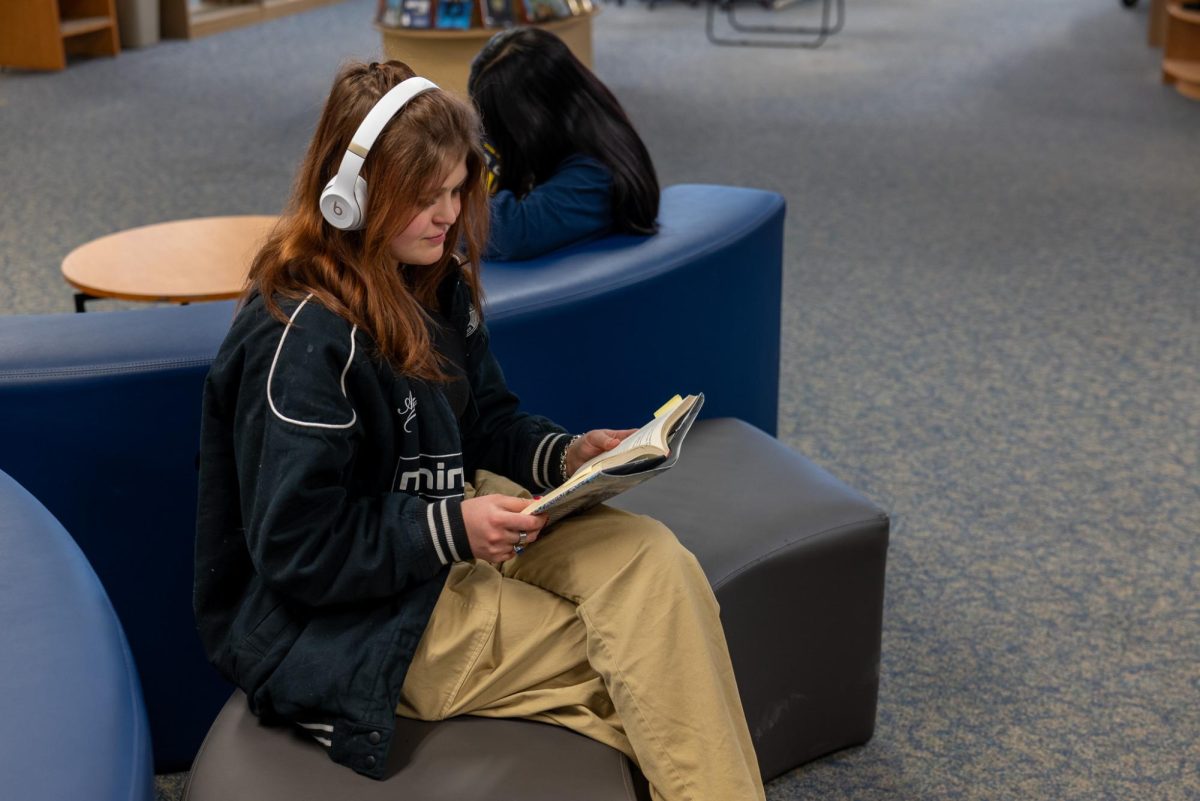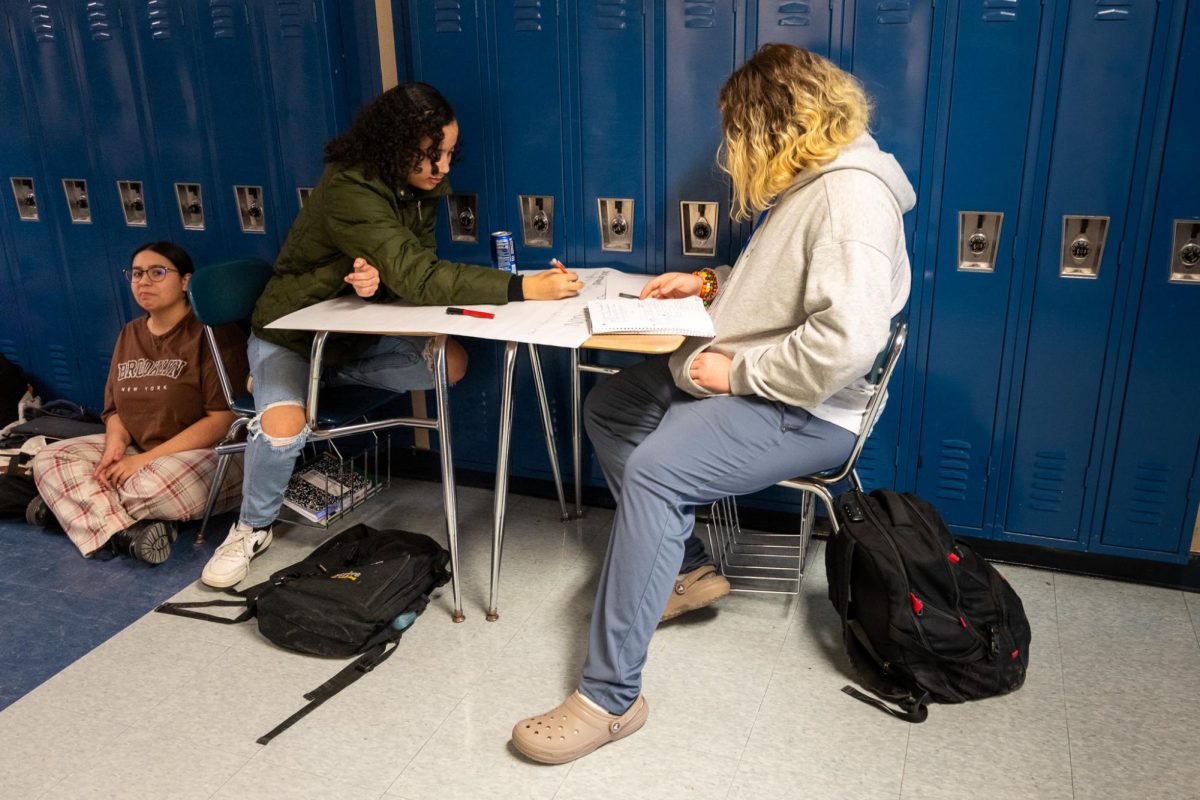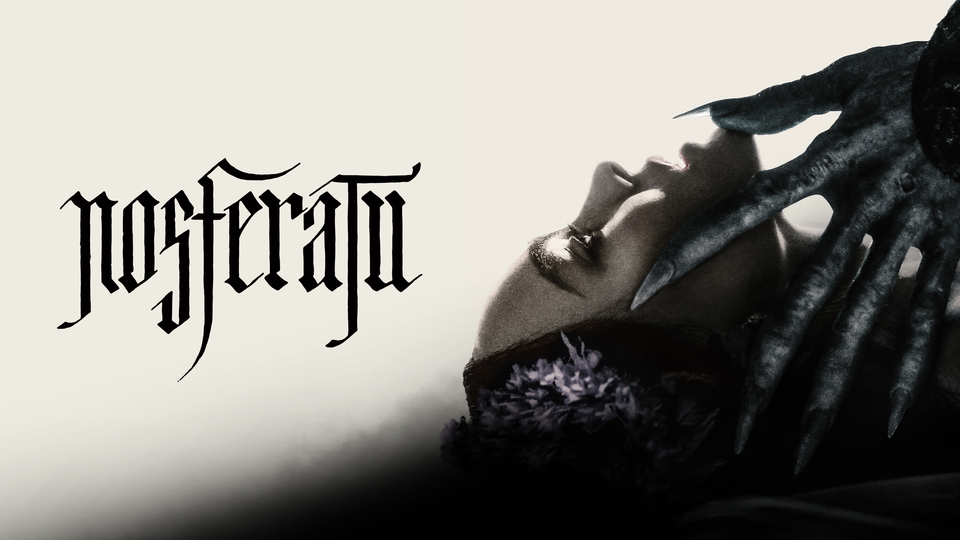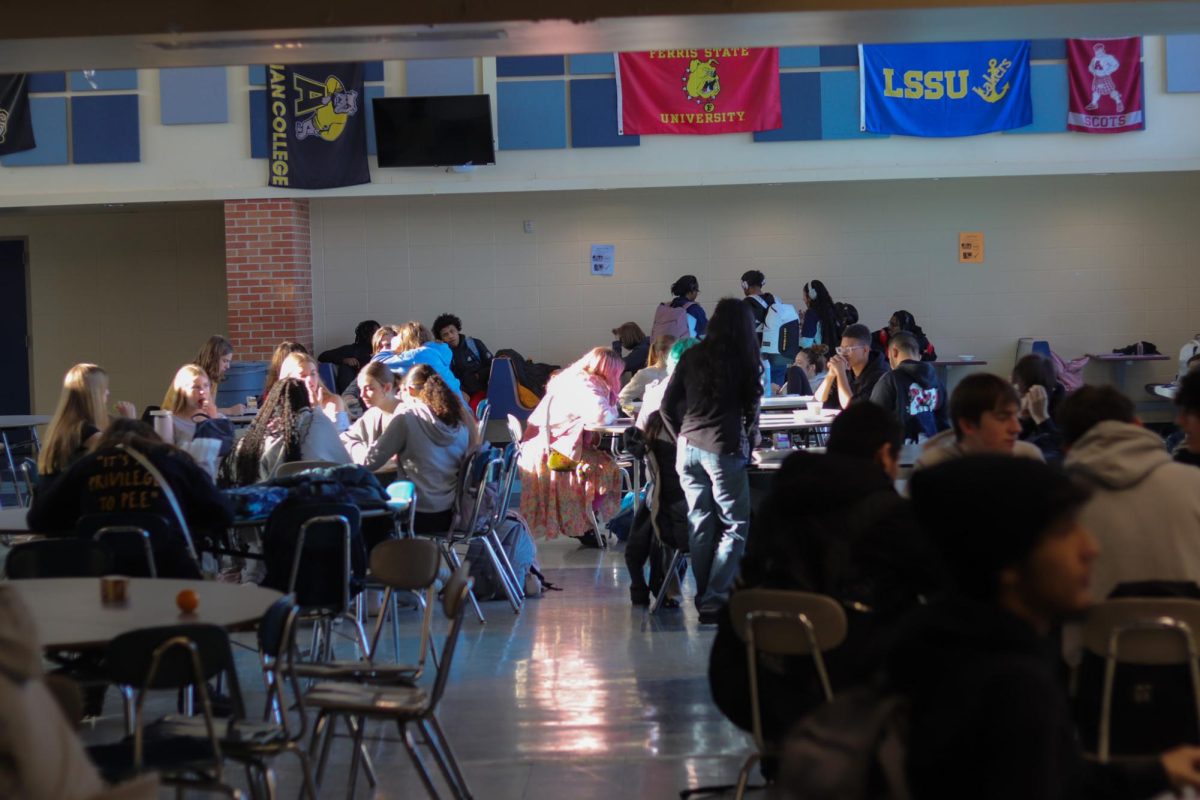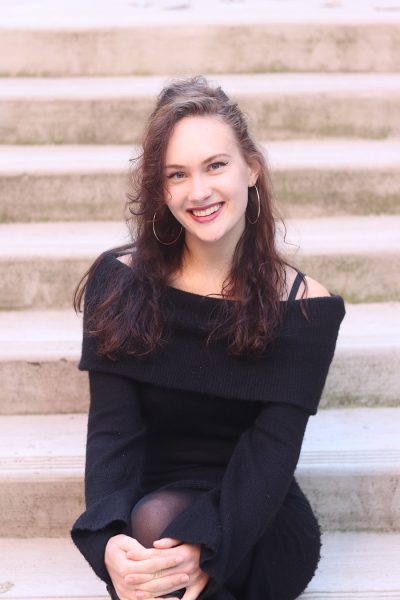On Friday, December 1, Loy Norrix students took the stage donned in cowboy boots and thick southern accents to perform in the classic musical “Oklahoma!” and were met with thunderous applause.
The story follows a young woman named Laurey, played by junior Catie Frink, living in Oklahoma during the early 1900s as she navigates love, independence, and life on a farm.
What first stood out were the fantastic visuals in every scene, with gorgeous costumes, realistic sets, and amazing commitment from the actors on stage.
There was a stark visual difference between the brightly dressed and expressive Ado Annie, played masterfully by senior Ellen Terzino, and the fiercely independent and soberly dressed Laurey, sung beautifully by Frink. The costumes mirrored their character traits well.
Sophomore costume designer Rosie Hill’s job was to mend the outfits and contribute to the decision making process, and all of the hard work was visible.
Despite strong performances from all lead actors, including Hana Westrick as Aunt Eller, Braeden Davis as Curly, Sam Davis as Jud, and Reed Davis as Will Parker, there were “show stealing” actors in every scene.
Max Achenbach played Gertie, intercepting dialogue with hilarious ugly shrieks of laughter that sent the audience into a roar of laughs themselves.
The choreographer for the play, Kris Stahl, did an excellent job. The female ensemble brought an impressive level of performance to the musical, with perfectly blended vocals and impressive ballet-inspired choreography that was magnetic and enchanting.
Later on in the show, four boa clad performers put on a show-stopping dance near Jud with shining corsets and flowing dresses, transporting the audience to a different time.
Speaking of Jud, Sam Davis delivered a performance full of dualities, deciding to portray the traditionally hated character in a different way, free from inspiration from past portrayals.
“I wanted people to feel for Jud because he’s definitely got a lot of mental health issues,” said Davis.
The original portrayals of the song “Pore Jud is Daid” dealt with the concept of suicide as funny in a somewhat uncomfortable way, but Davis wanted to use that space to portray Jud’s complexities as a character, effectively giving the scene a more serious light and allowing the audience a chance to empathize with him.
That wasn’t the only change that was made to the musical to help modernize it. The director Dan Lafferty chose “Oklahoma” because he wanted to revisit a popular classic.
“It’s sort of like Shakespeare,” Lafferty said. “…It’s not everyone’s thing, but every so often we should revisit it.”
As a result of the show being 80 years old, the original musical has some undertones of misogyny and female possession through marriage, which Lafferty worked to edit out.
“We altered the way Ado Annie’s character is viewed in terms of how the characters discuss her getting married,” Lafferty explained. “It seemed more possessive than we wanted it to.”
Despite the dated portrayals of marriage and women’s roles, the student performances and fantastic direction gave a completely enthralling experience to the modern audience, and I would recommend the show to anyone.
I was transported from the cold winter of Michigan to a corn field in Oklahoma, a place I would refuse to travel to without the glitz, vocals, and magnetic characters that the performance delivered. Frankly, unless Ado Annie herself personally welcomed me to the great state of Oklahoma, there would be no chance of a visit.




